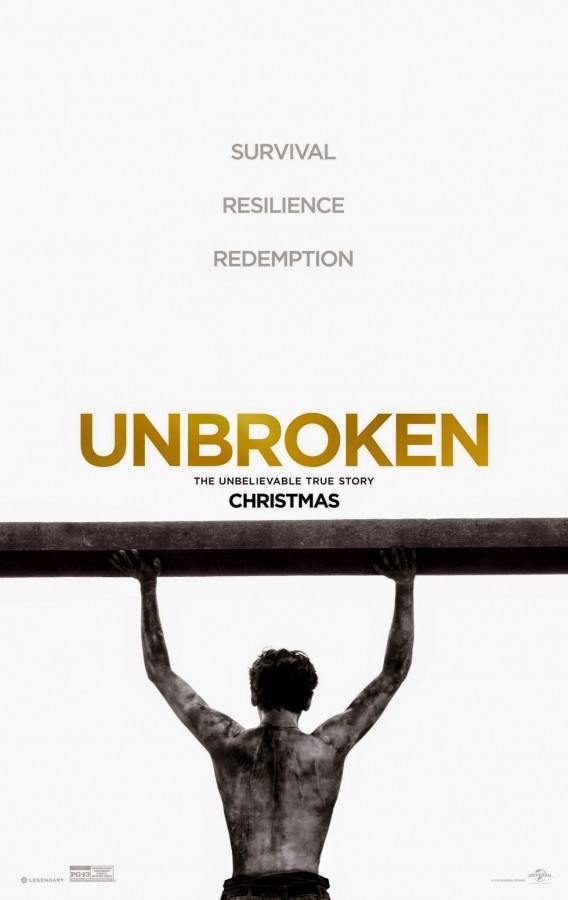‘Unbroken’ an Olympian’s story of struggle and resilience
February 13, 2015
I find myself a bit unsure of how to even begin to write a review for a movie so well-depicted as “Unbroken.” The film, which came out in theaters on Christmas day, was a movie-creation of the non-fiction book “Unbroken: A World War II Story of Survival, Resilience, and Redemption.” The movie and book told the real life story of American Olympic athlete and American soldier, Louie Zamperini, who found a way to survive World War II under unbelievably unlikely circumstances.
The story begins during Zamperini’s childhood. The young boy grew up in Torrance, California, as an immigrant from Italy. Put simply, he was a committed troublemaker, from looking up women’s skirts, to stealing, to smoking cigarettes behind run-down sheds. As a troublemaker, he was adapted to trying not to get caught: being chased, and running. One day his brother took a liking to how fast he was able to run, and he trained him, pushing him to his limit — which, by the end of the movie, seems nonexistent. After his brother’s training and his own uncanny strength, Zamperini qualified for the 1936 summer Olympics, where he set a new record time for the fastest final lap. And here is one of the first traces of Louie Zamperini’s sheer, “unbroken” resilience.
We switch back to Zamperini’s present time, World War II. While Zamperini and his team set off on a rescue mission, things turn for a loop. Their plane malfunctions, and they crash in the middle of the ocean with very few supplies. There they are stranded for 45 days, forced to eat the insides of dolphins, fish, and ducks in order to sustain themselves. When they find themselves close to starvation and dehydration, they face another challenge when a plane appears and begins shooting them with darts. This was one of Zamperini’s last hopes for survival until the final scenes, but despite this, he never lost his will to fight and live.
The movie continues guiding us through the true events of his life, one of the only noticeable flaws being the limited dialogue amongst the characters. Zamperini and his partner get taken by a Japanese concentration camp, where they end up being separated, not to be reunited until after the war. This is where the true horror of the soldier’s experiences become evident,.He is beat, abused, starved, punched in the face by every single hostage, and forced to do manual work sun-up to sun-down. Zamperini is the specific hostage whose strength immediately strikes a nerve of his corporal, and on his first day, he is personally hit over the head with a stick several times. The relationship between him and his corporal is one of the most compelling in the story. The golden cinema moment was near the end, but this is one moment that can only be fully experienced in front of the big screen.
The end of the movie shows real pictures of the family, and tells the shocking facts of what Zamperini did after his return. We learn how he found inside him the ability to “forgive, rather than retaliate.” The heartwarming clip of present day, 80-year-old Louie Zamperini is enough to drive you to the theater. After years of PTSD, he refused to let go of his dream, and eventually became an American symbol of integrity and brute will for survival.











